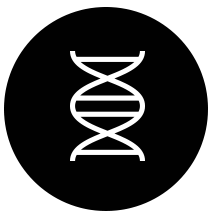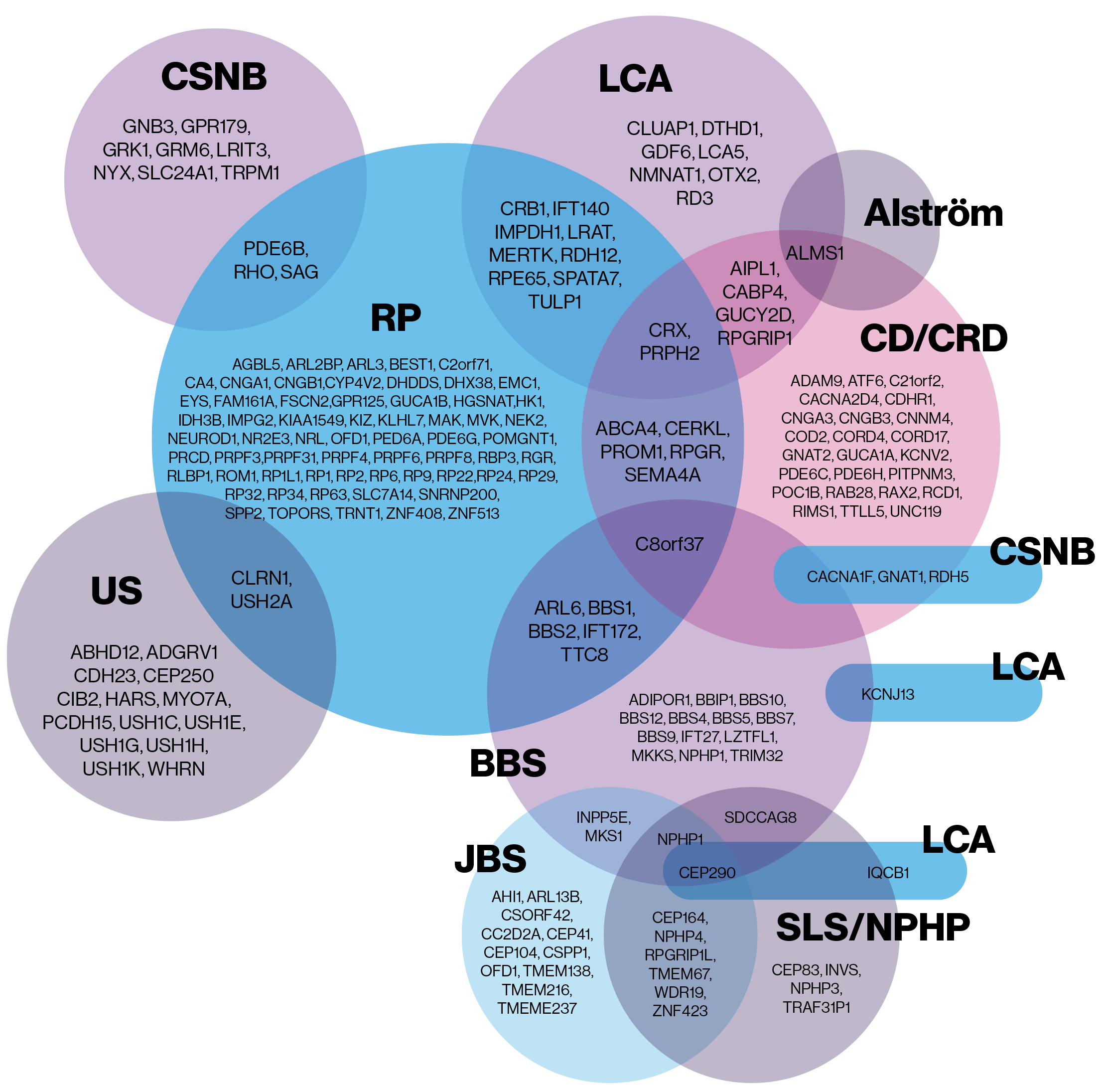There are lots of different types of IRD and different tests doctors can carry out to work out which type you have.
Signs and symptoms
There are a range of different signs and symptoms that you might experience, beyond problems with your vision. These vary because of the number of diseases that are included in the term inherited retinal dystrophy. Below are signs of vision problems that might prompt a doctor to do more tests. This list highlights some of the problems you might see across different types of IRD.
In babies and young children:
- Nystagmus (uncontrolled eye movements)1
- Photophobia (sensitivity to light)1,2
- Poking or rubbing of the eyes1
- Problems with hearing and balance (mostly associated with Usher syndrome)3
In older children and teenagers:
- Difficulty reading and seeing things at a distance
- Loss of visual acuity2
- Night blindness (nyctalopia) or problems seeing in dim or low light1,2
- Slow eye response when switching from bright to dim light
How is IRD diagnosed?
Receiving a diagnosis for an IRD can be daunting, but knowing the process of a diagnosis is important in understanding your options.
There are two types of diagnosis for IRD: clinical diagnosis and genetic diagnosis.4
Clinical diagnosis
This is based on observations of the signs and symptoms you experience as well as tests in the doctor’s office. Its aim is to make a first diagnosis of an IRD, to find out what sort of IRD you have and what the likely course of your disease will be.
There are a number of different tests your doctor or ophthalmologist can carry out to see if you have an IRD and, if so, what sort it is. Some of these are outlined in more detail below.5

Genetic diagnosis
A genetic diagnosis is where genetic testing is used to tell you what gene mutation is causing your IRD. It’s used to validate and confirm the clinical diagnosis and find out exactly what is wrong. Not all of the mutations that cause IRD have been identified yet, but a large proportion have, and a genetic test should be able to tell you more.6,7

Clinical tests for IRD
Your doctor or ophthalmologist may carry out a number of different tests to diagnose IRD and work out which type you have. What might you expect?
-
Visual field testing: Uses a machine to check how much of the peripheral vision has been affected.8 This is non-invasive and involves you indicating when you can see a given stimulus, such as a flashing light, in your field of vision.8
-
Retinal imaging: Uses a special camera to take images of the back of the eye, including small structures and any abnormalities.9 This can be used to confirm a suspected clinical diagnosis and help guide further testing.
- Fundus photography: A fundus photo is a picture of the retina that can be used to detect abnormalities. Fundus photography can be combined with autofluorescence imaging to give more information; it also makes it possible to diagnose Stargardt disease more easily.5
- Optical coherence tomography (OCT): A scanning device that works by bouncing light waves off the retina to get a better picture of what is going on in the layers of the retina.5
-
Electroretinography (ERG): Measures the electrical response of rod and cone cells to light using an electrode placed on the cornea. This helps to see if the photoreceptor cells are functioning as they should be.5
Genetic testing
What is genetic testing?
Genetic testing involves looking at your DNA, usually from a blood sample, and sequencing your genes to find the specific mutations related to your IRD.10 It’s done to give a genetic diagnosis of your condition.9
Why is genetic testing useful?
Genetic testing can help to identify exactly what mutations are causing your IRD. This can help give a better idea of how your disease is likely to progress and can help guide your disease management. A genetic diagnosis can identify if you might be a candidate for any clinical trials or approved treatment (see more here) and can help provide information that can guide further research into the treatment of IRD.10
As well as this, a genetic diagnosis can help you to feel reassured about your condition,your likelihood of passing it on to your children, and how to manage your own disease.8
Getting referred for genetic testing
Your ophthalmologist or doctor will usually want to identify your IRD with a clinical diagnosis before proceeding to genetic testing. They may also want you to speak to a genetic counsellor before referring you for a test, so that you can receive help and support to make sense of your results.8
If you think a genetic test could be the right option for you,
speak to your doctor about the possibility.
